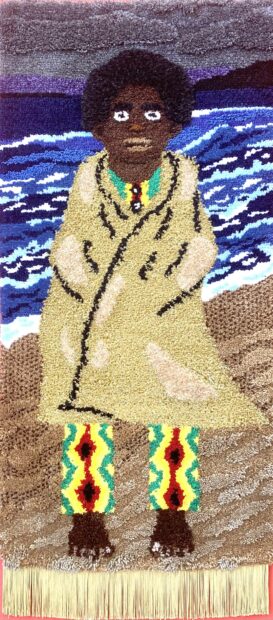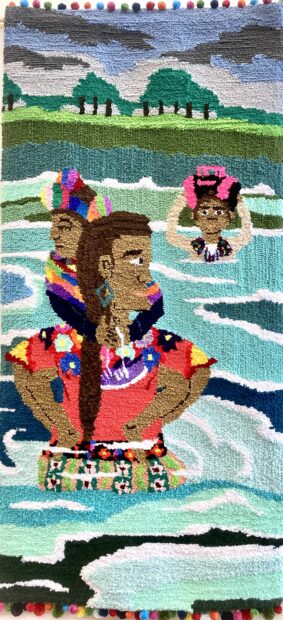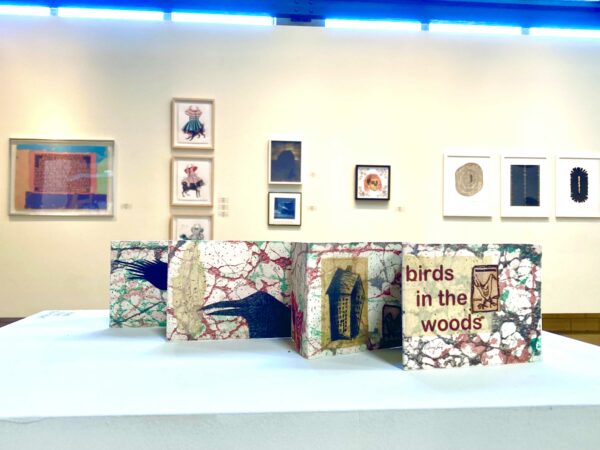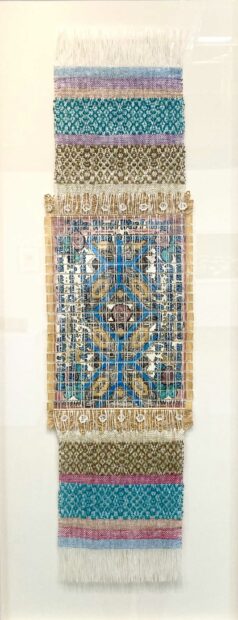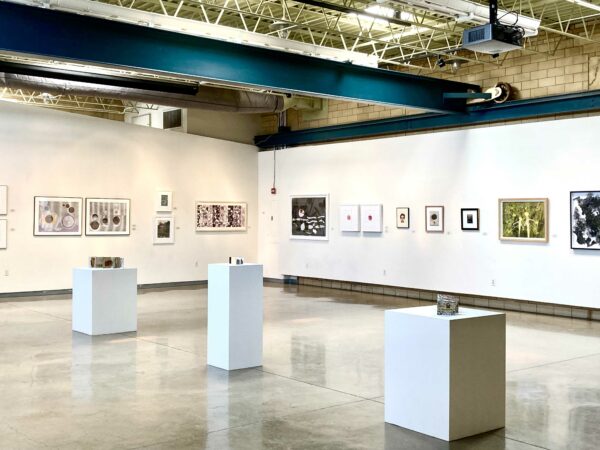Houston is summering in the Texas Panhandle with two July exhibitions at the Louise Hopkins Underwood Center for the Arts (LHUCA). The current work of Columbia-born artist Nela Garzón — a resident of Houston since 2012 — is on view in LHUCA’s Christine DeVitt Jones Exhibition Hall, in her project entitled Not One of Us.
Here, Garzón juxtaposes an exclusionary title with what, at first blush, are seemingly innocuous textile works of an innocent style, recollecting tourist tchotchkes, folk art, and the brightly colored home décor of such designers as Alexander Girard. But any superficial complacency that the viewer may harbor on approaching the works is quickly dispelled: Garzón is situated within the decades-long tradition of feminist artists who adopt the historically — and easily-poo-pooed — “womanly arts” to point to social inequities and injustices (think Faith Ringgold, Miriam Shapiro, and Chilean arpilleristas). Like a matador who hides a sword behind a brightly hued cape, Garzón ultimately delivers an incisive skewering of surgical precision through a series of works that confront colonialism, migration, and the exploitation of indigenous lands and peoples.
For example, in her series entitled Runners, the artist plays upon dual meanings of the word (i.e., those who run, as in refugees, as well as the long floor mat one might use to decorate a hallway) to recount tales of global diasporas. Using traditional techniques, such as hand-tufting and latch hook — along with geographically and situationally-specific trims of glass beads, faux fur, pompoms, corn husks, and those coin-like medallions often found on belly-dancing getups — Garzón weaponizes the rug. Now, rather than a decorative souvenir, to be brought home and walked upon, these “runners” are eye-level and filled with indigenous figures who stare back, even as they flee from their own homes.
Examples of this are such tapestries as Deadly Trails, Rio Grande and Central Mediterranean Route. Garzón shares similar themes in her acrylic-on-canvas series Forasteros, which depicts European white males variously posing in African masks, amidst a kill of plains buffalo, and posing with big game trophies. The implication here is clear: as tourist/colonialists, we feel free to collect the wares and handiwork (and more) of the developing nations that we may visit, while simultaneously — and conveniently — disavowing the people themselves. In this way, “not one of us” becomes both an excuse for omission and an indictment against the encroaching outsider.
In the adjacent Helen Devitt Jones Studio Gallery, PrintHouston’s group exhibition, ThinkINK, curated by Eepi Chaad and Jeramiah Macha, features works by twenty-eight artists. Functioning as a primer on printmaking techniques, the show includes a variety of woodcuts, monotypes, screen prints, collagraphs, linoleum cuts, and cyanotypes, just to name a few. Many of the works employ a variety of mixed media methods, including pastel, collage, and textiles, to create objects in two- and three-dimensions that range from delicate to downright haunting. Renee Magnanti’s In Athens After World War II features etching, watercolor, lace, and yarn in a work so subtle as to be almost entirely elusive, like a memory of the days before there was war, whether world or civil.
Meanwhile, Terry Svat’s handmade books move print from the wall to the pedestal in pieces that evoke epistemologies — the where, how, and why of what we know. Books, after all, are treasured repositories of knowledge, lore, values, and histories. Her Birds in the Woods, for example — the title of which suggests “babes in the woods” — holds the fascination of fairy tales in ambiguous imagery that is both whimsical and dark. The birds here are alternately primitive, child-like, and archetypal, pointing to such contradictions as bird-as-messenger of hope and harbinger of doom. The piece conjures the same paradox that allows a Grimm’s tale to share space with both a gingerbread house and a cannibalistic witch.
Until the works from both of these exhibitions return to Houston, we are happy to have them vacationing in the Panhandle with us. Both shows end their tenure at LHUCA on July 29, 2023.



